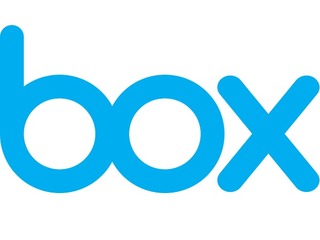How does Ginkgo Bioworks make money?
Ginkgo makes the majority of its money from the sale of its end-to-end COVID-19 testing services
Read more...
It's hard to remember a world without the cloud. Back in the day, transferring all of your information and contacts from one phone to another was tricky business. It always felt like it could easily be lost. Now? It's all on the cloud. I just sign in to my Apple ID, and poof, there it is.
Of course, the most obvious benefit has been getting all of the crap off of our computers, with services like Dropbox and Box freeing up vast amounts of space on our harddrives and servers.
We've already looked at how Dropbox, which focuses on the consumer side of the business, makes its money, but what about Box, which takes care of the enterprise side? While the two companies follow a similar plan, but there are some key differences between them.
Most notably that Box offers its customers two different ways to pay for the service: they can either purchase Box via its traditional "per seat" model, in which companies pay for how many employees will have access to files, or they can purchase its platform via API calls.
In both cases Box uses a freemium model, in which customers can either get the service for free, or pay extra for more features and useage.
For its per seat model, Box offers a free personal account, which gives a single user 10 GB of storage with 250 MB file upload size. For paying customers, plans start as low as $5 a month for 10 users, 100 GB storage and 2 GB file size, and go as high as $35 a month for unlimited storage and 5GB file size.
For its API platform, Box offers a free plan for developers to integrate box, as well another free plan that offers 25K API Actions per month. For any amount over that, Box offers a plan for $500 a month. The company also allows its customers to create a customizable plan for their needs.
Box announced in March that it is going to go public this year (though its offering has been delayed a bit) and in its form S-1 the company revealed its 2013 revenue, which saw significant growth along with big deficits.
Last year, the company more than doubled its revenue, ending the fiscal year on January 31, 2014 with $124 million, up from $58.8 million the year before. At the same time, though, the company saw a net loss of $168.6 million for the same 12-month period, up from a loss of $112.6 million for the year prior.
Those losses are primarily being driven by Box's sales and marketing expenses, which added up to over $171 million last year, up from $99 million in 2012. That is nearly four times as much as it spent on its next highest expense: research and development, which only cost the company $45 million.
Overall, Box has now a total accumulated deficit of $361.2 million.
Founded in 2005, Box now has over 34,000 paying organizations, and over 25 million registered users. It is seeing over 2.5 billion content interactions every three months. While it started as a consumer-focused service, it pivoted to zero in on the enterprise. Clearly, it was a wise move.
Aaron Levie, Box's dynamic and indefatigable co-founder and CEO, gave a Vator Splash talk in 2012, sharing his lessons and advice on how and why he made that decision.
In all, the company has raised $409 million from DFJ, Scale Venture Partners, US Venture Partners, Meritech Capital Partners, Emergence Capital Partners, Andreessen Horowitz, Bessemer Venture Partners, Salesforce, and General Atlantic. It most recently raised a $100 million funding round at a $2 billion valuation.
(Image source: grabi.org)
Ginkgo makes the majority of its money from the sale of its end-to-end COVID-19 testing services
Read more...GE Healthcare, which went public after spinning-off, makes most of its revenue from imaging products
Read more...The company makes most of its money through the sale of its Health Monitoring System
Read more...
Joined Vator on
CO-Founder and CEO of Box.
